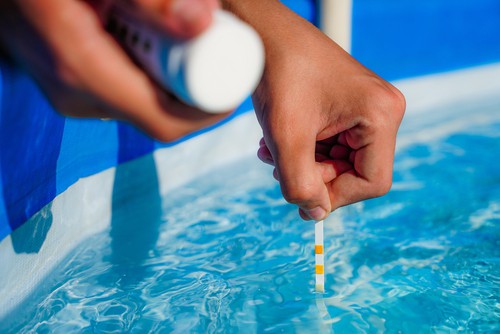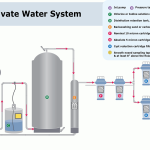Welcome to our comprehensive guide on how to adjust the pH level in your pool! Maintaining the proper pH balance in your pool is crucial for ensuring clean and healthy water for swimming. pH is a measure of how acidic or basic the water is, and it is essential to keep it within the optimal range to prevent problems like algae growth, skin irritation, and equipment damage. In this article, we will discuss why pH balance is important, how to test the pH level in your pool, and various methods to adjust the pH to the ideal range.
Importance of pH Balance in a Pool
Proper pH balance is key to a well-maintained pool. If the pH level is too high or too low, it can lead to a host of issues. Here are some reasons why maintaining the correct pH in your pool is crucial:
- Prevents Skin and Eye Irritation: An imbalanced pH can cause skin dryness, red eyes, and skin irritation for swimmers.
- Protects Pool Equipment: Incorrect pH levels can corrode pool equipment such as pumps, filters, and heaters, leading to costly repairs.
- Ensures Sanitizer Effectiveness: Proper pH levels allow chlorine and other sanitizers to work effectively in killing bacteria and other contaminants in the water.
- Prevents Algae Growth: Maintaining the right pH range helps to inhibit algae growth, keeping your pool water crystal clear.
Testing the pH Level in Your Pool
Before you can adjust the pH in your pool, you need to know the current pH level. Testing the pH is a simple process that can be done using test strips or a liquid test kit specifically designed for pools. Follow these steps to test the pH level in your pool:
- Fill a clean container with pool water.
- Dip the test strip into the water or use the liquid test kit as per the manufacturer’s instructions.
- Compare the color of the test trip or the liquid to the provided chart to determine the pH level.
- Record the pH reading for future reference.

Credit: www.swimmingpool.com.sg
Adjusting the pH in Your Pool
If your pH level is outside the recommended range of 7.2 to 7.6, you will need to adjust it to ensure optimal water quality. Here are some methods to adjust the pH in your pool:
1. Adding Ph Increaser (sodium Carbonate)
If your pH is too low, meaning the water is acidic, you can raise the pH by adding a pH increaser, such as sodium carbonate. Follow the manufacturer’s instructions for the proper dosage based on your pool size.
2. Adding Ph Reducer (sodium Bisulfate)
If your pH is too high, indicating alkaline water, you can lower the pH by adding a pH reducer, such as sodium bisulfate. Be sure to follow the recommended dosage to avoid overcorrection.
3. Aeration
Aeration is another method to raise pH levels in your pool. By introducing air into the water through methods like using a fountain or waterfall, you can increase the pH naturally over time.
4. Acid Injection
If your pH is consistently high and aeration is not effective, you may need to consider acid injection to lower the pH. This method requires professional assistance to ensure safety and accuracy.
Monitoring and Maintenance
After adjusting the pH level in your pool, it is essential to regularly monitor and maintain the pH balance. Test the pH at least once a week and adjust the levels as needed to keep the water within the recommended range. In addition to pH, also monitor the alkalinity and calcium hardness of the water for comprehensive water balance.

Credit: m.youtube.com
Conclusion
Ensuring the proper pH balance in your pool is vital for the health and longevity of your pool. By understanding why pH balance is important, how to test the pH level, and methods to adjust the pH, you can maintain clean, clear, and safe pool water for you and your family to enjoy. Remember to test your pool water regularly and take proactive steps to keep the pH within the optimal range. With these tips, you can enjoy a sparkling pool all season long!




